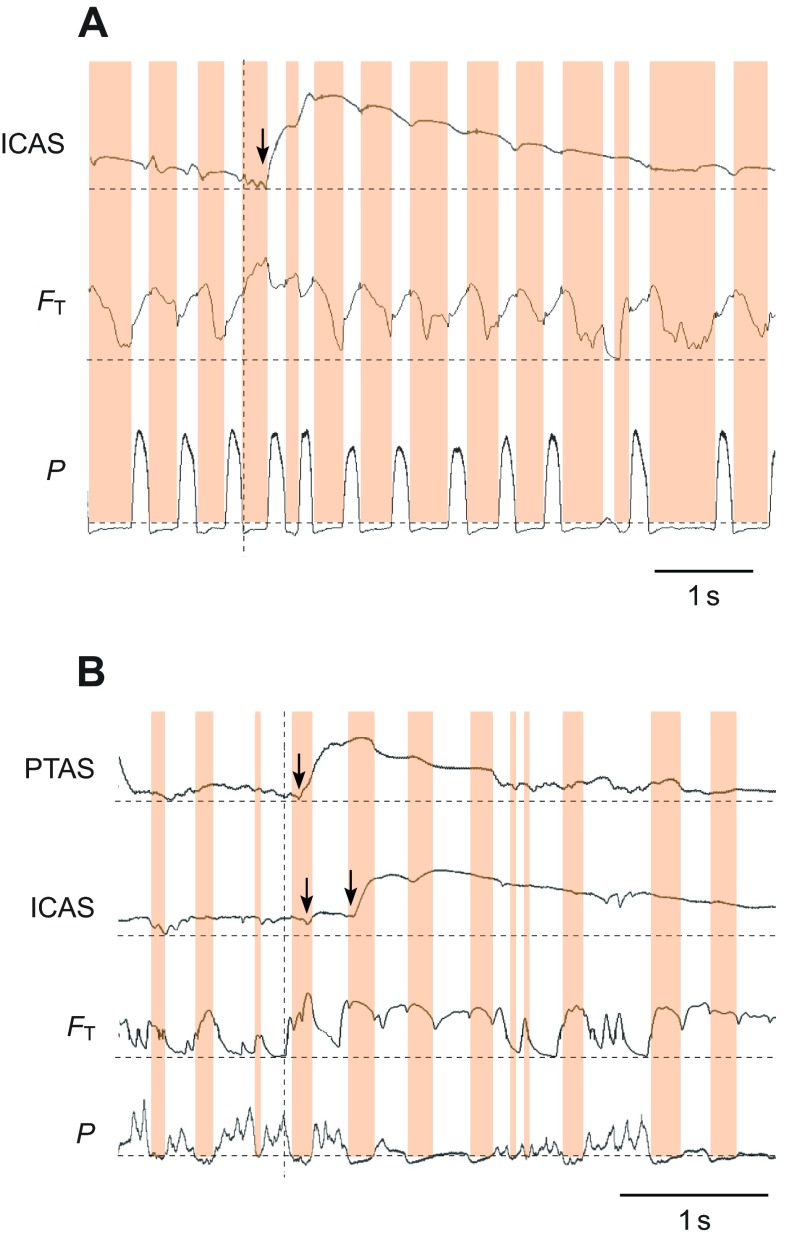Fig. 5.
Dynamic behaviors change the respiratory rhythm and the airflow pattern. (A) Example for a series of calls produced by a yellow-headed blackbird. Calls are generated during expiratory pulses with increased amplitude (P) and the inter-call interval consists of short inspirations of variable duration (orange highlights). In this example, the helium pulse arrives in the ICAS at the end of the inspiration during which it is inhaled (arrow). (B) Wing flapping is accompanied by irregular modulation of the subsyringeal air sac pressure (P) and a different arrival pattern of helium in the air sacs. Although some helium arrives in the ICAS during the first inspiration (left arrow), the increase during the second inspiration (right arrow) is much more pronounced, indicating that a larger volume of helium enters the air sac during this second inspiration. Labels for traces as in Fig. 2.

